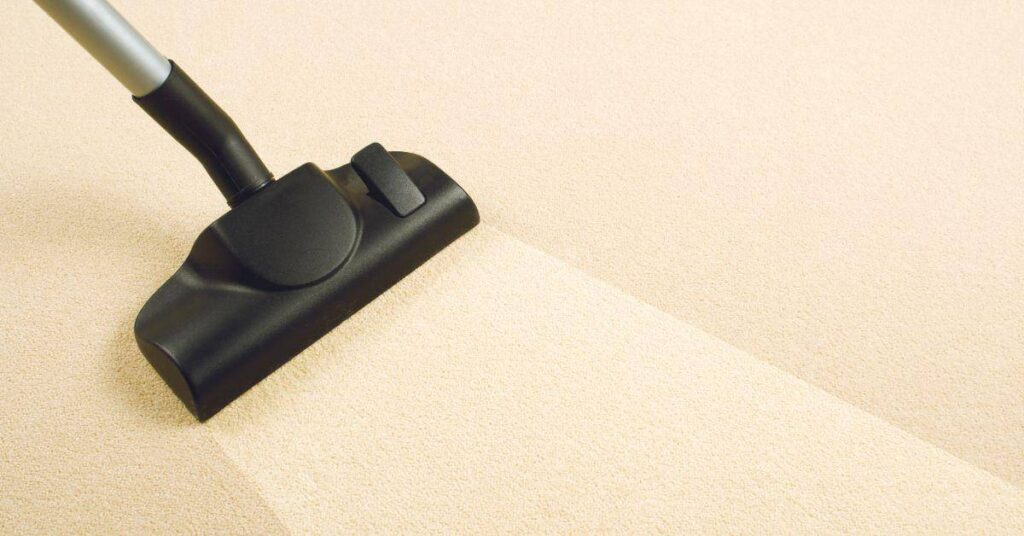Different Techniques, Customers, and Carpet Cleaning Service Add Ons
Instagram is full of videos of carpet cleaners. It’s a satisfying sensory experience to see and hear a sped-up video of a professional carpet cleaner applying his craft and revealing the finished project.
It also makes home and business owners aware that keeping their carpets and rugs in tip-top shape is easier than they think. That can translate into opportunities for different types of carpet cleaning businesses.
When considering going into professional carpet cleaning, it’s vital to know the various methods and equipment required for residential and commercial jobs.
Read on for a complete guide to types of carpet cleaning businesses.
Methods of Carpet Cleaning
There are two main carpet cleaning techniques; wet and dry. The two categories subdivide into specific methods used in both commercial and domestic settings.
Dry Powder Cleaning
Strictly speaking, all carpet cleaning involves some moisture. Methods referred to as “dry” use a low volume of water.
In dry powder cleaning, the technician applies gentle powdered cleaning products with some water, detergent, and solvent. Once the mixture is sprinkled over the carpet, it dissolves dirt and draws it in like a sponge. The powder has to sit on the carpet for ten to fifteen minutes. The tech may work the mixture into the carpet fibers with a machine. Lastly, he vacuums up the powder and dirt leaving the surface clean and refreshed.
Dry cleaning is a quick and low-cost method best for high-traffic areas. It’s suitable for residential or commercial spaces.
Pros
- not a specialized technique requiring specific training
- a fast method that can take as little as twenty minutes before using the carpet again
- inexpensive
Cons
- the powder may be left behind causing build-up later
- the strong chemical smell may bother those with allergies or breathing issues
- only cleans the surface
Encapsulation Cleaning
This is another low-moisture carpet cleaning method where chemicals sit on the surface to absorb dirt before being vacuumed away. It’s quick and works well for high-traffic areas in commercial spaces. It has a few key differences from dry powder cleaning.
Sometimes called foam cleaning, encapsulation carpet cleaning works well on carpets that have been neglected for a while and are highly soiled. Oxi Fresh carpet cleaning actually uses encapsulation combined with oxygen to break up and extract dirt.
Oxi Fresh Cleans with Oygen and Encapsulation
The technician applies the foaming solution that bubbles and expands as it draws dirt and debris out of the carpet fiber. A rotary brush machine works the foam briefly before steam extraction removes the foam and dirt.
The foam and brush machine draws more dirt from the fibers than dry powder cleaning, but this is still not a deep cleaning method. It is relatively quick and low-cost for maintaining certain areas between deep cleansing.
Pros
- a quick and inexpensive method
- doesn’t require specialized machinery or training
Cons
- surface cleaning only
- pungent chemical smell that may bother those with allergies or breathing issues
Bonnet Cleaning
This third method is also a dry carpet cleaning process. The technician sprays a self-neutralizing solution onto the carpet and agitates the fibers. Rather than using counter-rotating brushes, this rotary scrubber has a dry cotton pad (bonnet) attached to it.
Bonnet cleaning is another quick and inexpensive way to maintain rugs between deep cleaning. The low volume of water used means carpets dry in about half an hour. It works well in residential and commercial settings.
Pros
- a quick and inexpensive method
- not a specialized technique
Cons
- surface cleaning only
Hot Water Extraction
Moving on to wet carpet cleaning methods brings us to the first type of professional carpet cleaning that requires more specialized skill and equipment.
Hot water extraction combines detergents with very hot water and high pressure. The hot solution injected into the carpet lifts dirt, debris, and stains from deep in the fibers. The technician uses a powerful vacuum that is either portable or truck-mounted to extract the dirty water.
The hot water extraction method is an excellent deep-cleaning process. Because it uses more water than dry cleaning methods, it takes longer to dry. Carpets may not be ready for use again for several hours.
This method is suitable for residential and commercial carpet cleaning scenarios as long as the customer can work around the time needed for carpets to dry.
Pros
- deep cleans to remove filth from carpet fibers
- recommended by carpet manufacturers for annual upkeep
- allows solvents to work longer
Cons
- takes hours to dry (although efficient technicians can reduce drying time with adequate equipment and methods)
- Required expensive, specialized equipment
- more expensive for business and customer
Note: the hot carbonating extraction method replaces detergents with carbonated hot water which avoids the problems of detergent residue and chemical odors.
Steam Cleaning
Steam carpet cleaning is a carpet cleaning technique that combines high-temperature water with high pressure. It is a deep-cleaning method that can remove dirt, mold, and odors from carpets.
Steam cleaning is an excellent choice for residential customers with allergies. The heat from this method kills bacteria and dust mites while it removes dirt and mold. There are also no chemicals to leave behind residue or odors, which is better for customers with breathing issues.
The steam method is also ideal for deep cleaning carpets for commercial customers.
Pros
- removes soil from deep in carpets
- pressure wand and extraction tools work on carpet fibers
- no chemicals required
Cons
- takes longer to dry compared to dry carpet cleaning methods
- requires specialized skills and equipment
- more expensive compared to dry cleaning techniques
Residential Vs. Commercial Customers
When talking about types of carpet cleaning businesses, we must consider the clientele they wish to service. Luckily, there is plenty of overlap between commercial and residential opportunities in professional carpet cleaning.
Most professional carpet cleaning techniques translate to any setting. The type of cleaning applied depends on the customer’s needs and budget. There are a few key differences to consider.
Time and Equipment
Commercial carpet cleaning jobs usually require more time and equipment. Office buildings typically have large swaths of carpets with several high-traffic areas. It takes targeted assessment to allocate time and manpower so there is no waste.
A company that only services residential clients may not need a large truck-mounted extraction machine unless they plan to service large suburban homes.
Scheduling
A cleaning service usually schedules residential customers during the day unless the clients need a night or weekday. Companies that stick to domestic services can maintain closer to a 9-5 work day.
Most businesses require any cleaning services to arrive outside of regular business hours. A company predominantly serving commercial clientele can expect to work nights and weekends most of the time.
Software like Housecall Pro Can Help You to Effectively Run Your Carpet Cleaning Business
Estimating Costs
Residential jobs are all unique. You can begin with a basic price per square foot. However, the size of the home, cleaning techniques used, and possible furniture moving all affect the final cost to the business and the customer.
While no two office buildings are the same, most professional carpet cleaners offer standardized service packages based on frequency and type of cleaning.
Commercial carpet cleaners also have the opportunity to specialize in specific types of buildings.
- Healthcare facilities (high hygienic standards)
- Education
- Industrial facilities
- Offices
Specialties
Typically, when a home or business owner calls a carpet cleaning business, they want wall-to-wall carpet or area rugs cleaned and refreshed. There are opportunities beyond basic carpet care. Carpet cleaning businesses may further specialize in niche markets like oriental rugs and upholstery cleaning.
Oriental Rugs
A potentially lucrative sector of the carpet cleaning market is specialization in caring for oriental rugs.
Oriental rugs require specific care and equipment to service and maintain. A rug centrifuge is an expensive piece of equipment, but investing in one allows you to clean everyday area rugs and oriental rugs and get them back to the customer faster.
A technician also needs to learn specific techniques and products to use on expensive oriental rugs to protect them from damage.
Pros
- A lucrative, niche market
Cons
- requires special equipment, cleaning products, and training
Upholstery
Another area to expand your carpet cleaning business is upholstery cleaning. Most of the same equipment you use to clean carpets translates to upholstered furniture, cars, boats, RVs, and more.
Deep-cleaning upholstery is simple to add to residential carpet cleaning packages. Professional steam cleaning brightens fabric, removes dirt and dust mites, and kills mold spores in furniture as well as carpets.
Pros
- Easy to add to an established carpet cleaning business
- no specialized training required
Cons
- required upholstery attachments for equipment
Air Duct Cleaning
Some businesses also eventually expand beyond their carpet cleaning service and add air duct cleaning as part of their services. This seems incongruent for a business dealing with fabric, but it makes sense from a service perspective.
Homes and offices that would hire a cleaning service for carpets also need their upholstery and air ducts cleaned periodically. If you offer all these services, you make your business a one-stop shop for any customer looking to deep clean their home or office in one convenient session.
You can offer air duct cleaning with an add-on system for your truck-mounted extraction unit, but it is less efficient than an air duct vacuum truck used by an HVAC service.
Pros
- an additional income revenue
Cons
- requires special equipment and training





